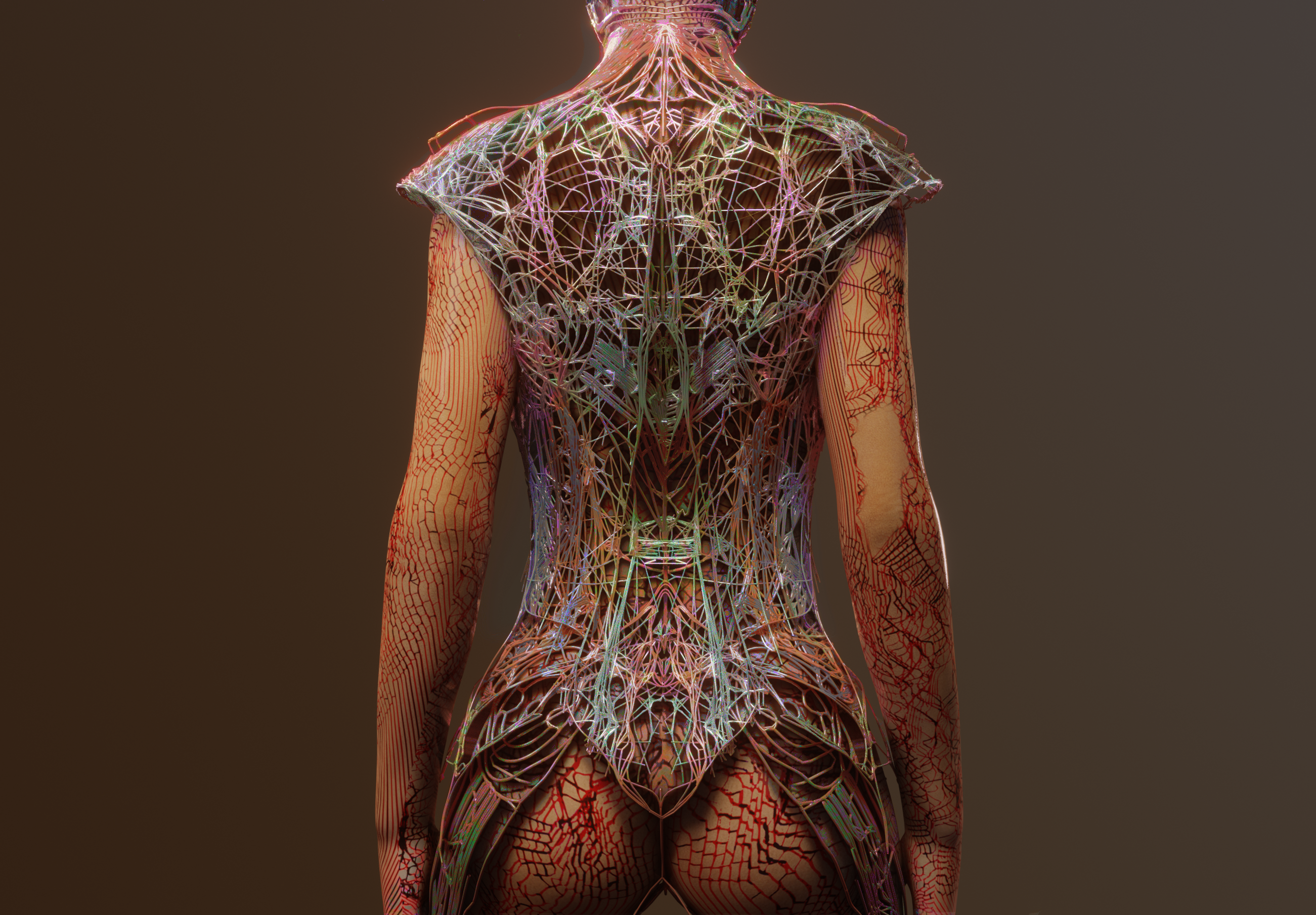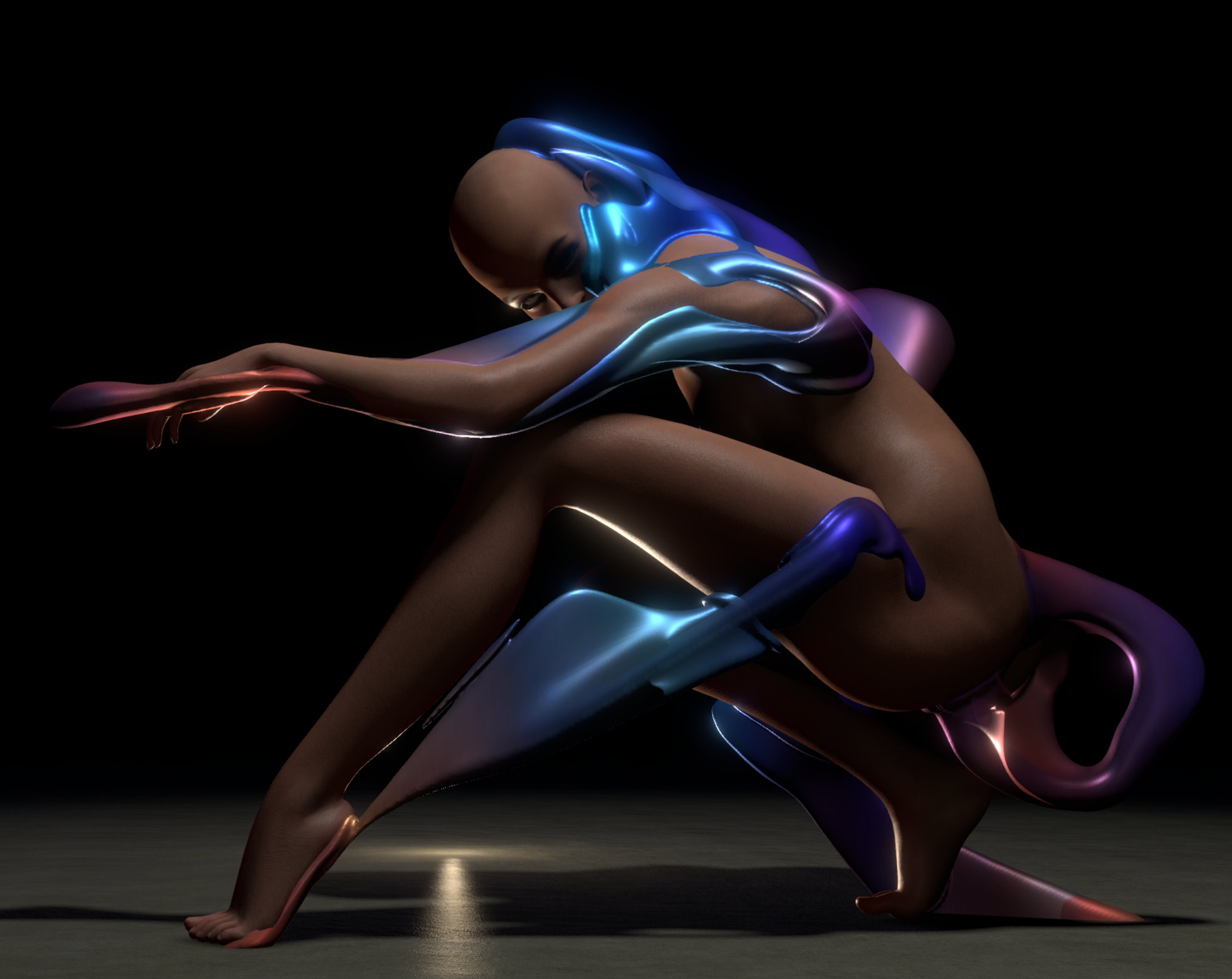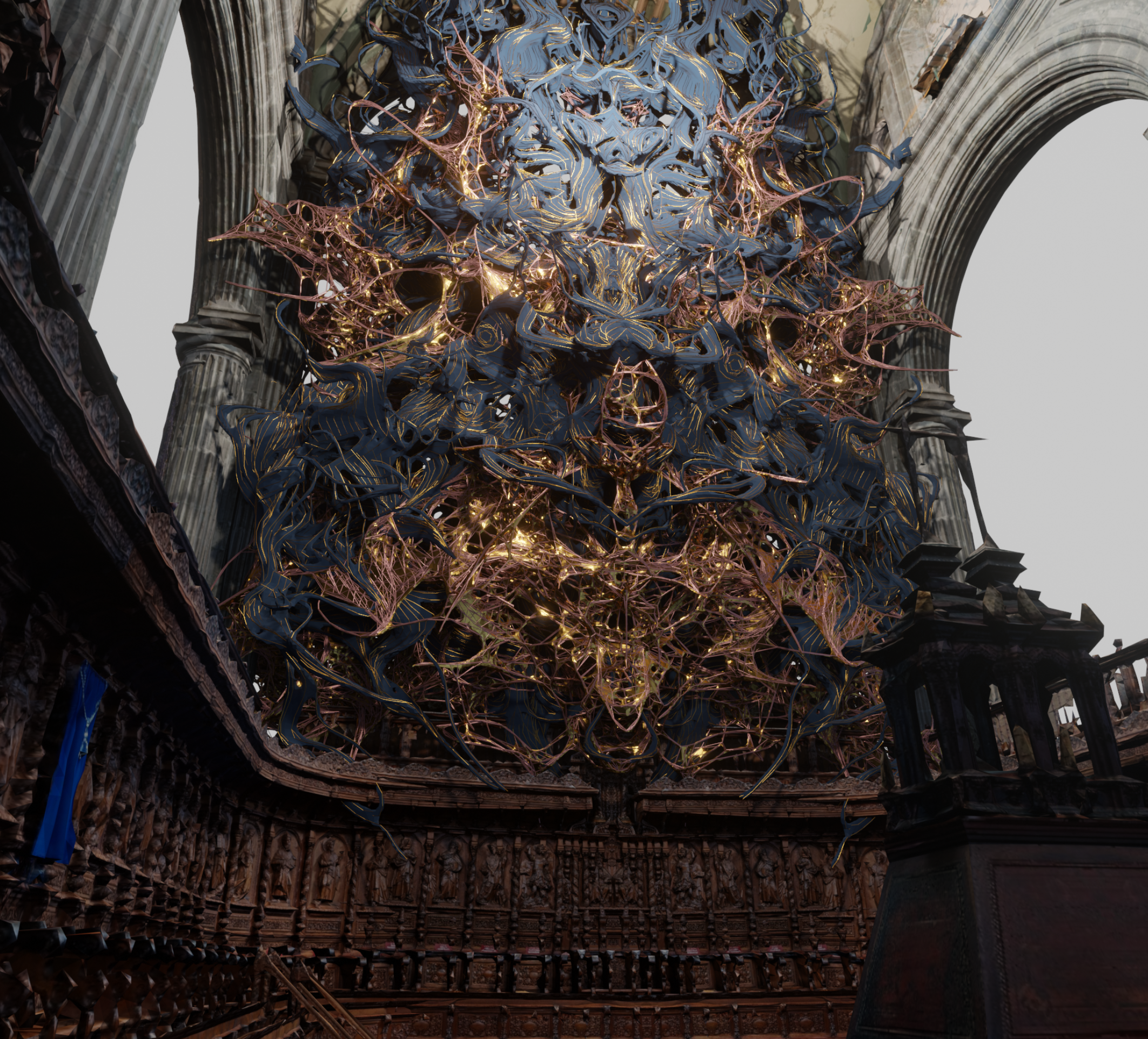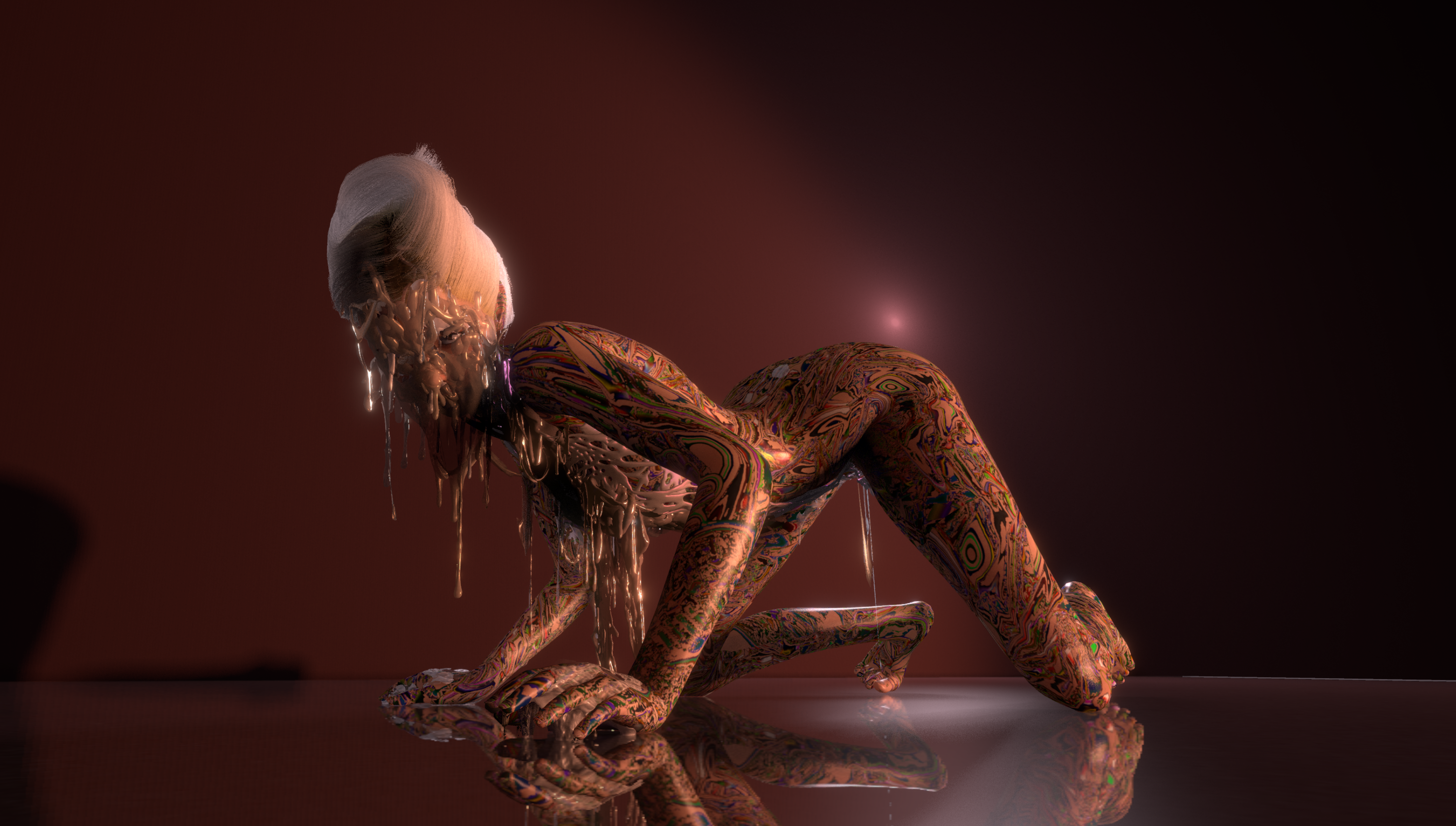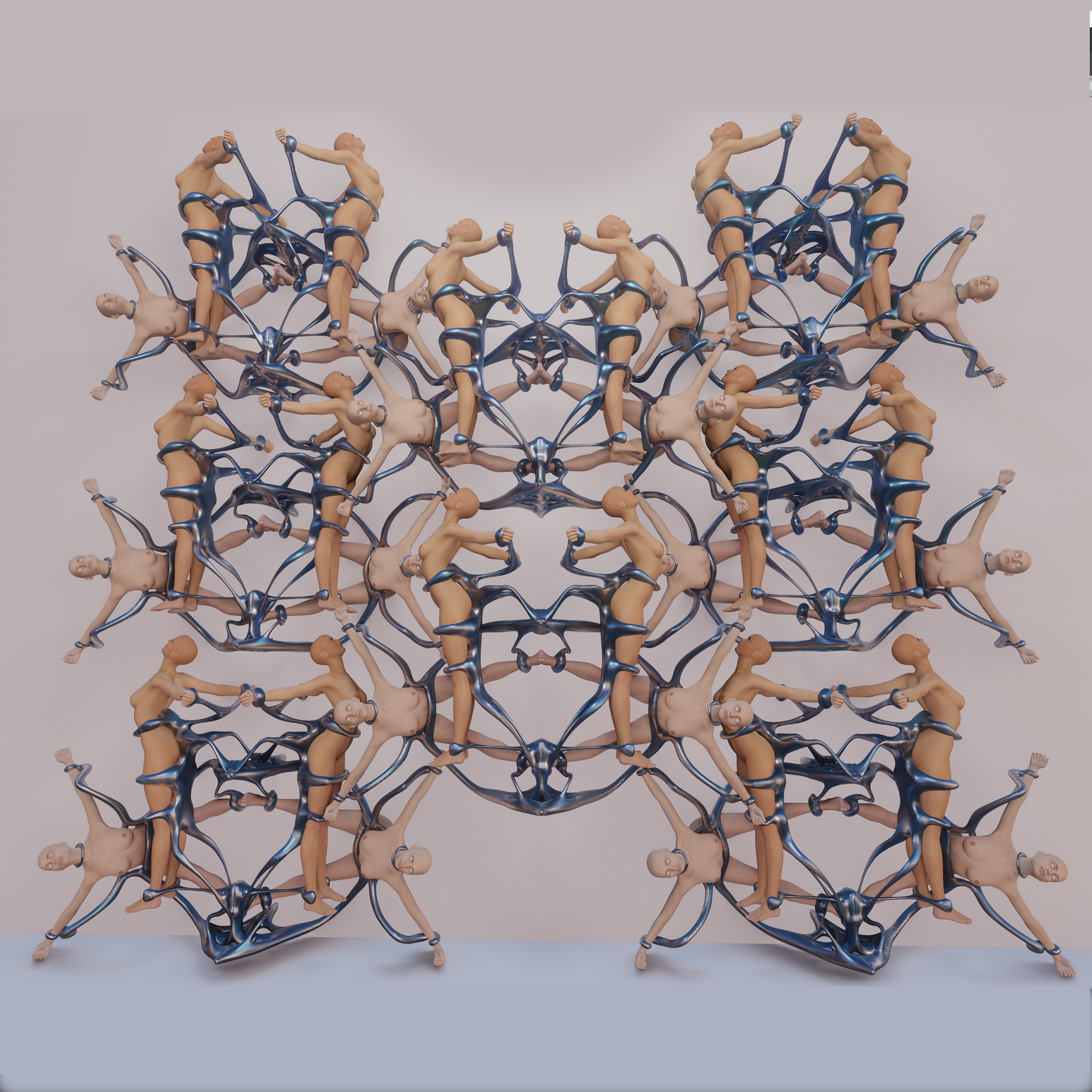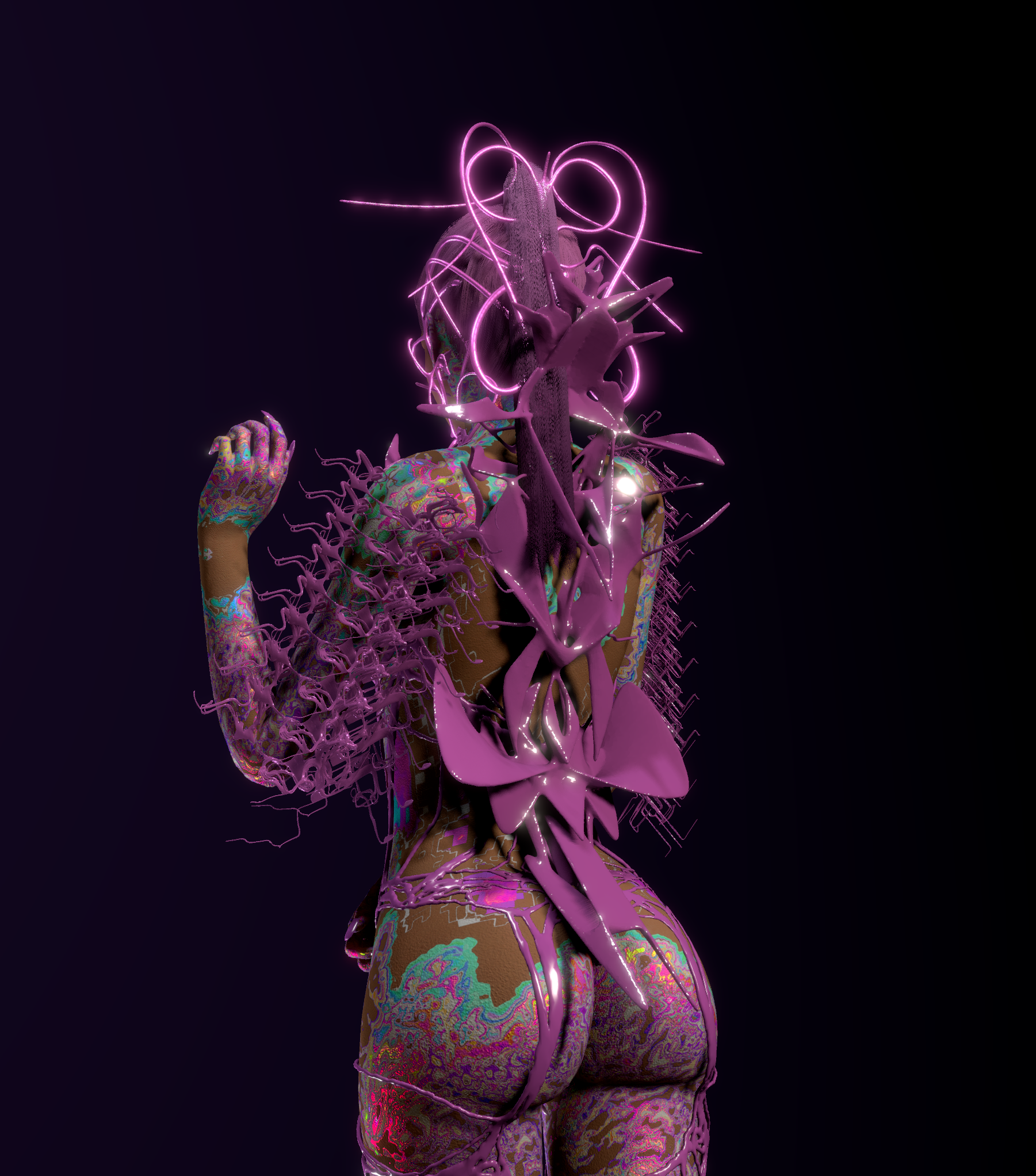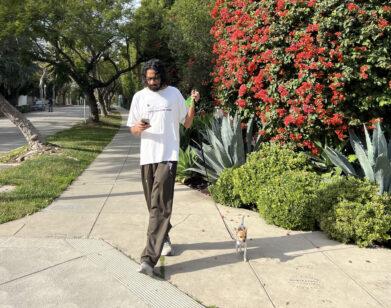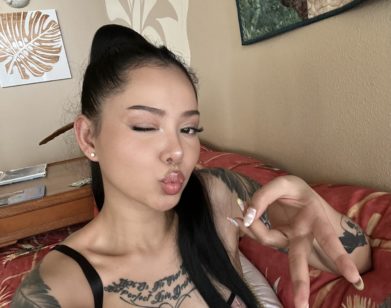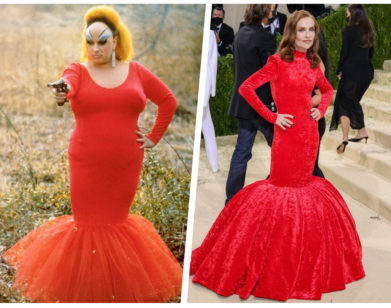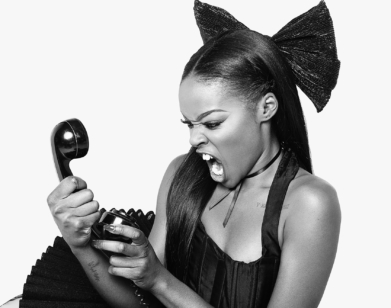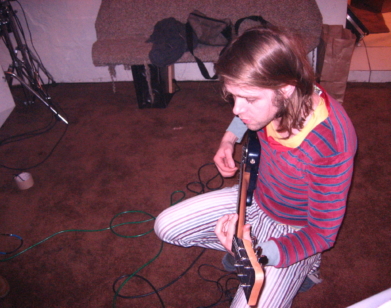The Glenn Questionnaire
Nusi Quero on Trespassing, Shoe Fondling, and His Next Publicity Stunt
You’re most likely to recognize Nusi Quero from his work on Grimes’ back. The former Hundred Waters band member, graffiti artist, and erstwhile architect first achieved internet notoriety earlier this year, when Grimes debuted a new full-back tattoo of one of his ethereal digital creations. Rendered in white ink (and administered during what Grimes described as “an impromptu tattoo party“), the design spans the entirety of the musician’s back and creeps over her shoulder blades like an alien birthmark.
A creative jack-of-all-trades, Quero’s most recent obsession is 3D printing. His ethereal, dimension-warping designs now take the form of resin-based body armor, which has been worn by Bebe Rexha, Chloe Bailey, and anyone else who can get their claws on the limited-release pieces from Superchief Gallery. Below, Quero takes a break from turning mortals into extraterrestrials to field some questions for us, lifted from Glenn O’Brien’s iconic 1977 interview with Andy Warhol. From his riskiest trespassing exploits to his undying love for Justin Timberlake, the artist shows us that inspiration strikes when you least expect it.
———
JULIA OLNEY: What was your first work of art?
NUSI QUERO: I think that there’s a photograph of me painting when I was three. the first painting I made is of a 20-legged creature dancing. Actually, there may be an earlier one. In my first memory, I was about two years old and I was being babysat. I remember shitting in the bathtub, and the babysitter yelling at me. I’m committed to this idea that art is a way of living, and that’s the first time I remember being criticized for something I made, so maybe that counts.
OLNEY: I’d say so. It’s amazing you have memories from that age.
QUERO: It’s perplexing. Maybe I remember it because of the drama of being yelled at, or maybe because it was the first time I riled a response out of someone.
OLNEY: Yeah, that makes it worth remembering. Did you get good grades in school?
QUERO: Not until college. In college I did very well.
OLNEY: Were you artsy in high school?
QUERO: Artsy? [laughs] Yeah, I was doing graffiti. And then, when I got a little too old to not get arrested for that, I started making music and was in bands and that was all that I cared about.
OLNEY: Off of that, what did you do for fun as a teenager?
QUERO: I grew up in Orlando, Florida. Orlando 15 years ago felt like a place that didn’t really have an identity. It was a very young city, you know. My friends and I would find these abandoned, failed tourist attractions and break in and explore them. They were always bizarre and hilariously, haphazardly built.
OLNEY: Any that you remember in particular?
QUERO: Yeah, there was this one called “Splendid China” that we would go to a lot. The Chinese government had built it in the early ’90s to encourage tourism to China. They had a bunch of Chinese entertainers come over on visas to perform dances, and they had a scale model of the Great Wall of China that they built brick-by-brick. We pillaged a little bit— we went into the offices and we found all these old documents about protocols: “If someone asks about your immigration status, say X.” There was a lot of funny stuff. There was also a place called Xanadu that we would visit a lot. It was this “home of the future” that was made of foam.
OLNEY: Oh, wow. How did you decide to become an artist and move to L.A.?
QUERO: Well, I was in a band. I was in grad school in Florida. I dropped out to go on tour with my band because we had some moderate success and we essentially were on tour for so long that we ended a tour in L.A. and our label was here, our manager was here, and we just decided to stay. That was in 2014.
OLNEY: So, you’ve been there a minute! When you were younger, what was your ambition? Did you dream of being an artist or musician?
QUERO: My first obsession was shoes with air bubbles in them. I really liked Nike Air Max shoes, but I could never afford them. I could have saved my allowance for two years and still not have been able to afford a pair, so I would draw them instead. My mom used to just drop me off at the shoe store to fondle the shoes, and I’m sure the employees thought I was a weirdo. Nothing fetish-y, purely for the joy of the product. I don’t know that I wanted to be a shoe designer, but that was the first thing that I kept returning to. I think someone would have been like, “he should be a shoe designer,” but I don’t think I said that to myself.
OLNEY: What age were you when you were doing that?
QUERO: Probably like seven to nine? Before that I was still eating my boogers .
OLNEY: Who was the first artist to influence you?
QUERO: Probably NSYNC. Orlando, was a big boy band city. I knew all the words to the first NSYNC album, and the second pretty much, and I really wanted to be like Justin Timberlake when I was like 12. I’ve never told anyone that before.
OLNEY: A fair admission at that age. What advice would you give to a young person who wants to become an artist?
QUERO: Stop telling people what you’re going to do and do it.
OLNEY: Yeah I think a lot of people need to take that advice. Do you think the art world is dead?
QUERO: It was never alive to me.
OLNEY: Who do you think is the world’s greatest living artist?
QUERO: Probably someone I don’t know. I think that “greatest” is a hard word. The person who blows my mind the most right now is Andrew Thomas Wong, he’s a film director.
OLNEY: Who is the richest artist in the world?
QUERO: Oh, well it’s got to be Alec Monopoly because all of his shit art brags about how rich he is so I’ll just assume that he’s speaking in good faith and that is really holding that down.
OLNEY: Fair enough. What is your favorite of all of your work?
QUERO: I wrote a song called “Trees,” it’s about trees, in 2015 when I was in the midst of a hypo-manic episode and I still think it’s really cute and great.
OLNEY: When was the last time you listened to it?
QUERO: Last night.
OLNEY: That’s good, you live by it. What was your first big break?
QUERO: I’ve been fortunate enough to have a few. The first one was in 2012, when my band got signed to a label and we were immediately thrust into this really wild tour with artists way bigger than us. I don’t know that I’ve had a big break yet as Nusi Quero. I think it’s been a pretty steady gradient of interest being piqued, though I did have a spike in interest when I collaborated on the back tattoo for Grimes.
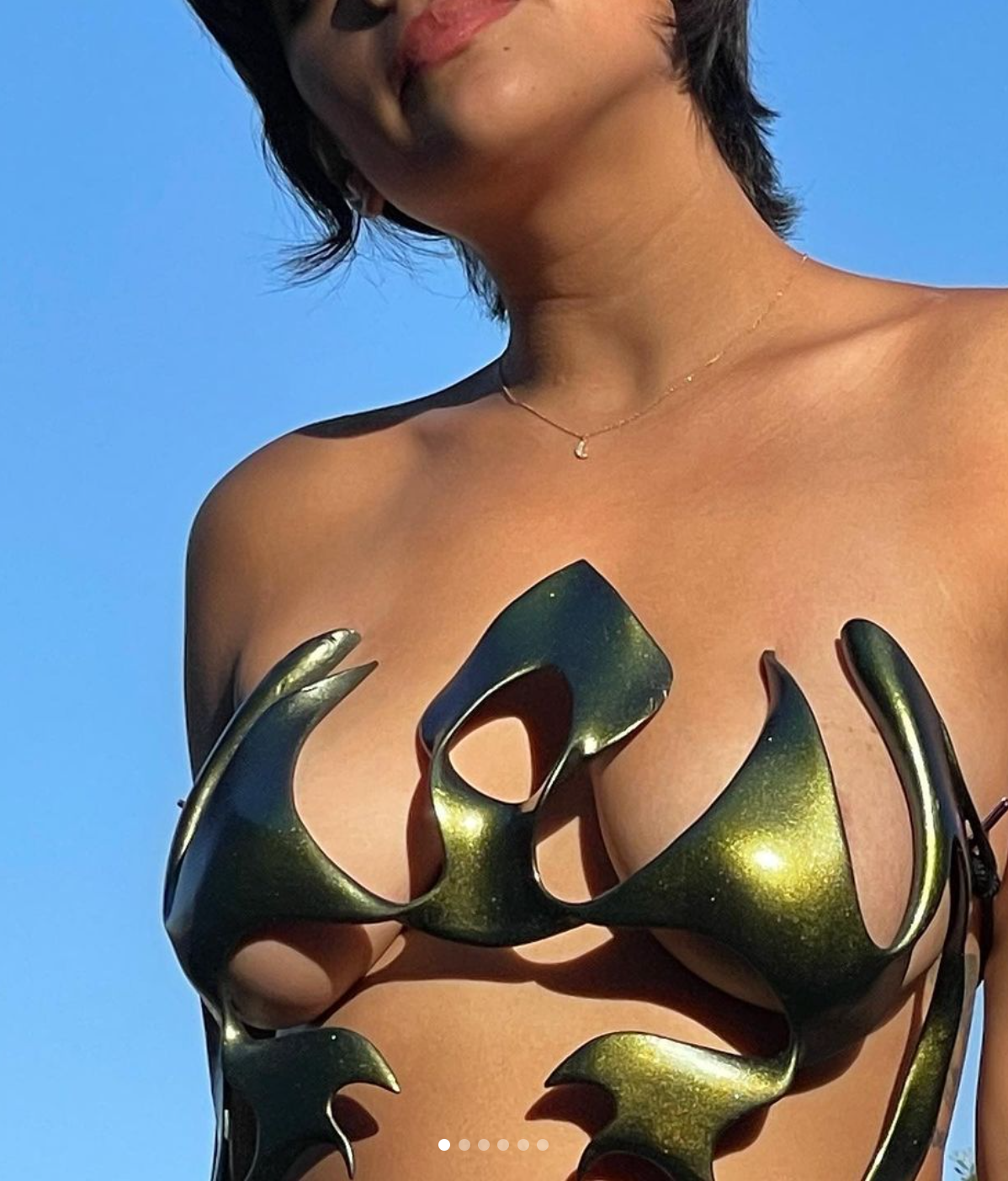
Courtesy of Nusi Quero.
OLNEY: How did you make the shift from music into more visual art?
QUERO: I had always done visual art. I started out doing graffiti, and I think that’s what imparted the principles of composition and synthesis that I still utilize and expand on today. When I was in the band, I would think a lot about our lighting or experiential aesthetics, and I found myself spending a lot more time doing that than anything else. I also started making a lot of music that didn’t really fit the brand of our band, so I left it in 2015. I still make music, but if I were to pursue the two equally, I would probably do both badly. So, I’m choosing to focus on the visual and physical.
OLNEY: Do you see your musical side and visual sides as separate, or do they intertwine?
QUERO: Both are about creating flexible, aesthetic systems that then weave in a harmonious or intentional way.
OLNEY: You mentioned that graffiti was your entry point into visual art. Is any of the graffiti you did in Orlando still up?
QUERO: I wonder. I haven’t been back in a while. I would guess that most of it is gone. The city likes to keep things pristine. In the neighborhood where I grew up, there was a water tower that my best friend and I would climb every once in a while. We wrote “Brad Rules!” up there as big as we could. Neither of us is named Brad. I wonder if that will ever come back to bite me now.
OLNEY: Why didn’t you write your own name? Were you trying to avoid incriminating evidence?
QUERO: No, never. Never compromise the vision. I’m willing to go down for this.
OLNEY: Coke or Pepsi?
QUERO: Coke, hardcore. I don’t even drink Coke, but here we are.
OLNEY: Fair. What’s your favorite publicity stunt?
QUERO: I haven’t had the opportunity to do many, but I do have a lot of them ready to go as soon as people give a shit. When I was in the band, we had a lot of publicity, but I was part of a group, and I didn’t have the courage to go haywire, even though it might have helped us. But I’m gearing up
OLNEY: Good to know. I’ll keep my eyes peeled.
QUERO: You should. I’m a self-proclaimed rascal and I’m going to do some silly shit.
OLNEY: Watch out world. Do you think there’s a lot of junk being made today that’ll be valuable someday?
QUERO: I think there’s a lot of junk being made today that will be, but there’s more junk being made today that will not be. There’s a tremendous amount of junk. So many things are being made, bought, used, and disposed of without even considering whether they needed to exist at all. It’s pathetic.
OLNEY: Do you make art every day?
QUERO: Yes.
OLNEY: How do you get in the zone?
QUERO: I sit the fuck down and just get going. I work off of momentum: every night I go to bed knowing what I want to start on or continue doing tomorrow. It’s my definition of happiness: every night I go to bed excited about what I’m going to do tomorrow, and then the next day try my best to do it. If I do that every day for my whole life, at the end I’ll say, “That was great.”
OLNEY: Do you think that people should live in outer space?
QUERO: I think people should stop having so many fucking kids without thinking about why they’re doing it, so that we don’t have to live in outer space.
OLNEY: Do you like to work?
QUERO: Yes, I like to work when I decide what the work is. Right now, my work is almost indistinguishable from play.
OLNEY: What time do you get up in the morning?
QUERO: A second before someone needs me to do something.
OLNEY: What do you do in the morning?
QUERO: I immediately drink a protein shake to stave off distraction from hunger and I make myself a caffeinated beverage, usually coffee. I don’t look at my phone for 15 minutes after waking up, I found that it reduces my anxiety. I usually stretch or pet my cats and then sit down at my desk, open my phone, deal with people’s expectations, and begin working.
OLNEY: How much time do you spend on the phone every day?
QUERO: I spend a lot of time on my phone, specifically because Instagram is a place where a lot of engagement happens with my artwork, and I like to be responsive and active. If people are fucking listening and looking for me I got some shit to say.
OLNEY: That’s amazing. Have you ever been in love?
QUERO: Oh yeah.
OLNEY: Do you believe in the American Dream?
QUERO: No.
OLNEY: Why not?
QUERO: The American Dream was an ad campaign. The skirt was lifted when we had that fucking moron Donald Trump as our President, and people realized we’re nation built on stealing from people and tricking people and selling things to people they don’t need. That’s not my game.
OLNEY: Do you think the world can be saved?
QUERO: Maybe not, but I don’t think about reality as the world. It is one world. I don’t think that humanity is important, I think we’re part of a continuum as vehicles of consciousness, and I think that, if the world is destroyed, that consciousness will persist. But it would be a really big shame if we fuck this place up permanently.
OLNEY: What’s next for Nusi? What are you working on?
QUERO: I’m working on making the work more physical, in more ways than just 3D printing tops that people wear. I’m working on bringing an experience and memory to more people.
OLNEY: What would that look like?
QUERO: It’s more about what it would feel like. It’ll be a place that people will go, and then they’ll leave.
———

